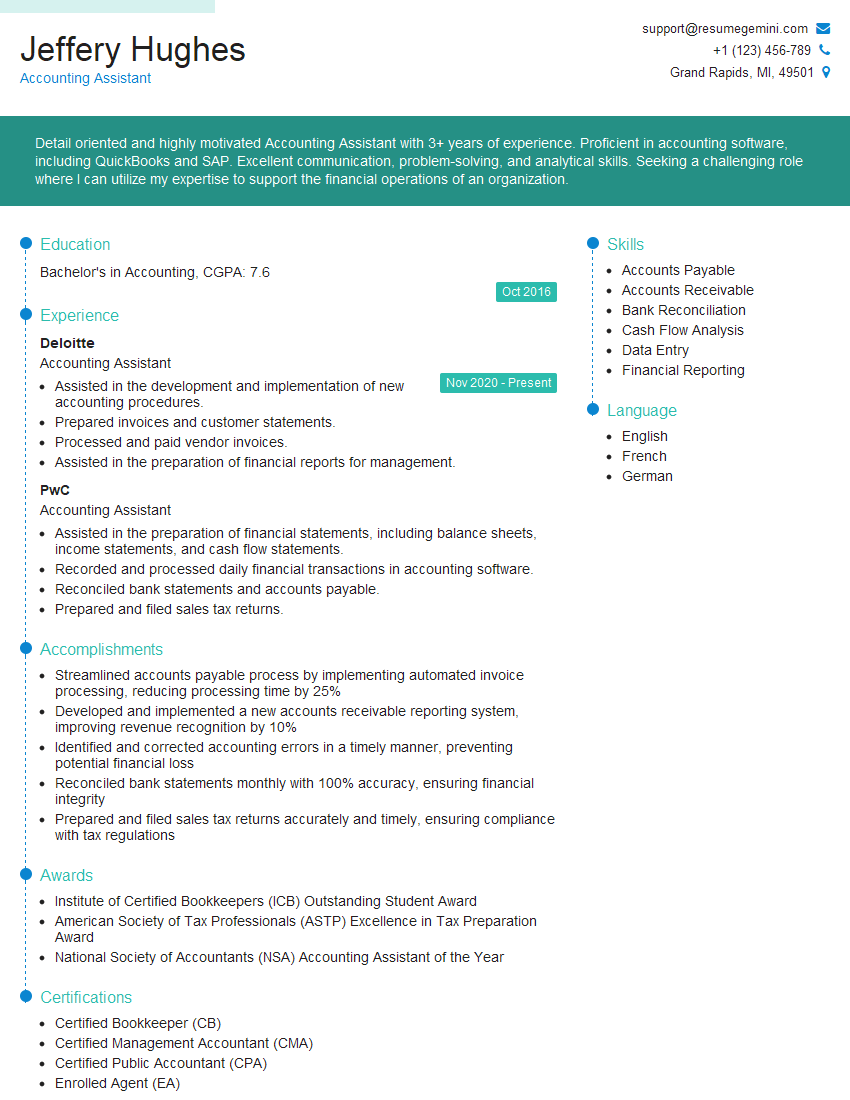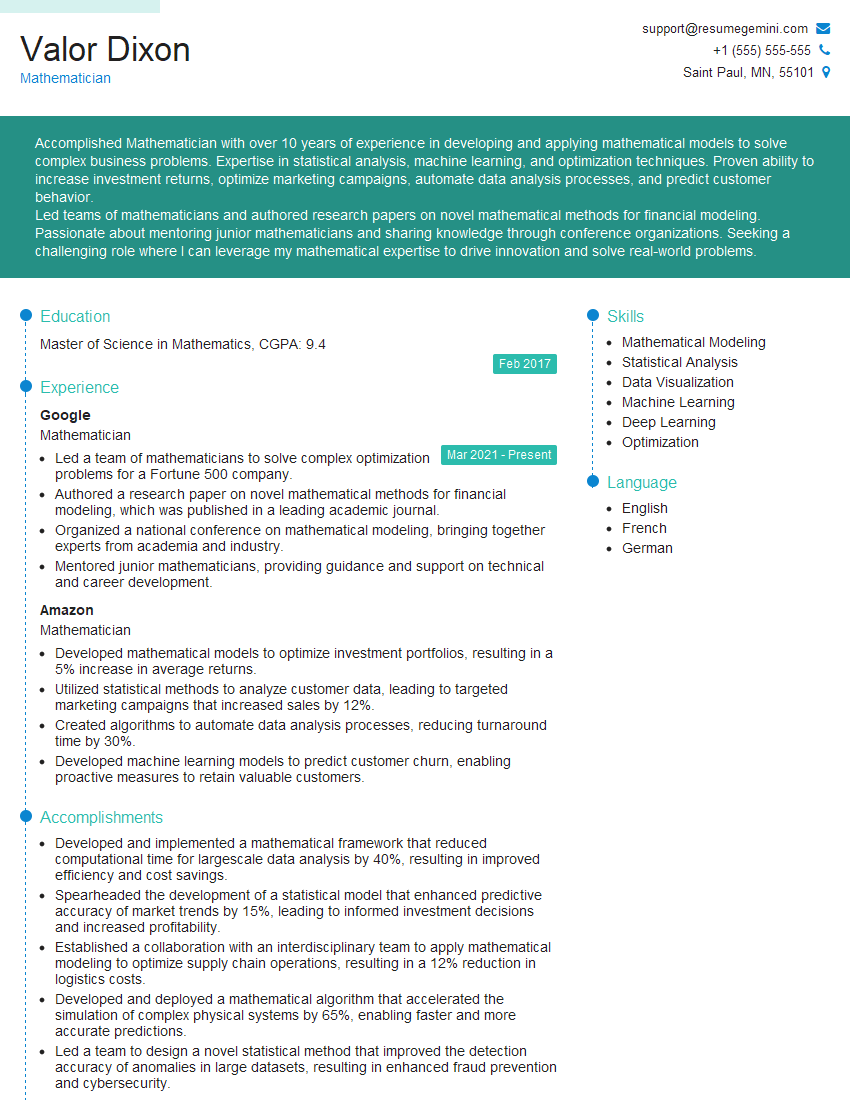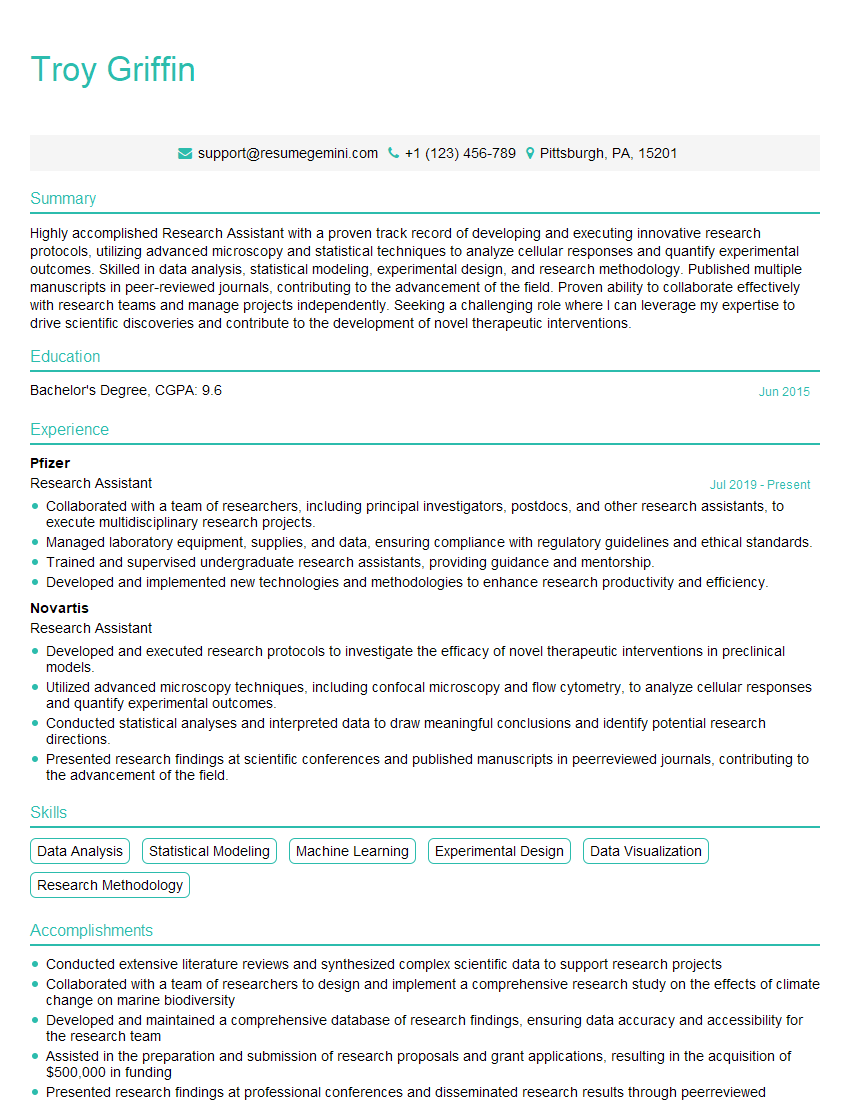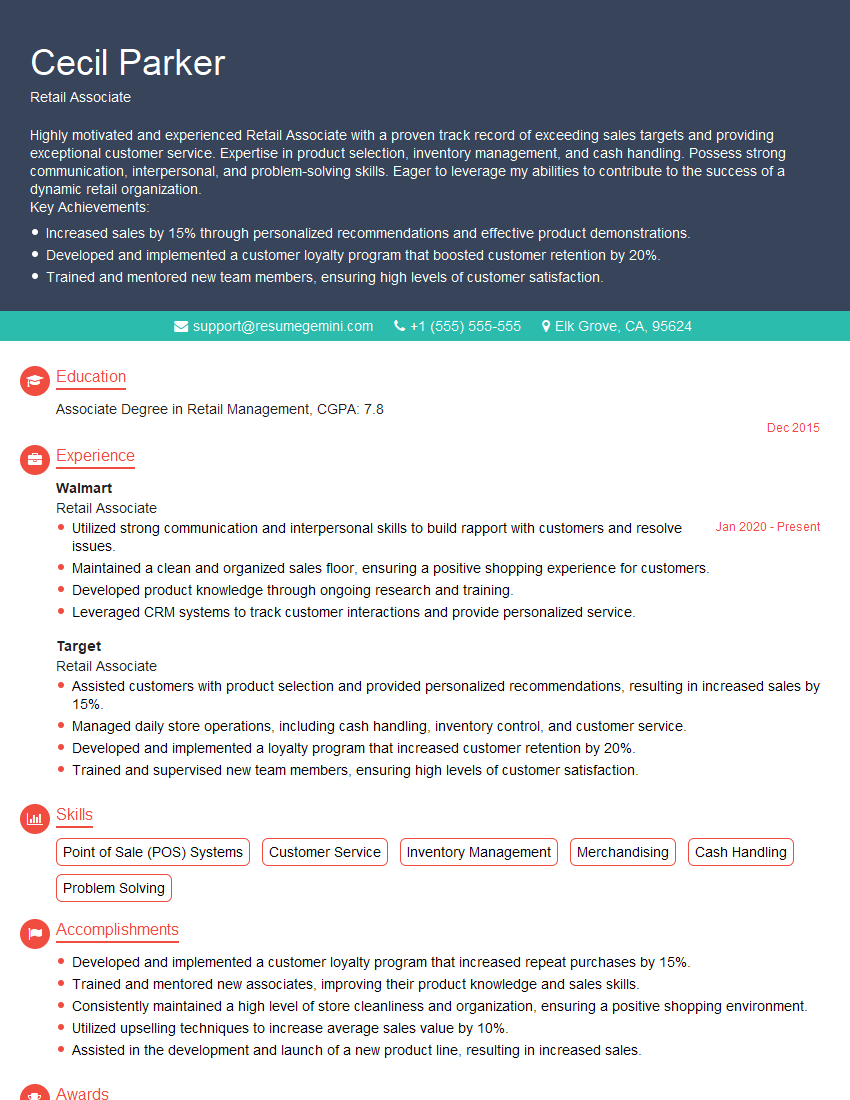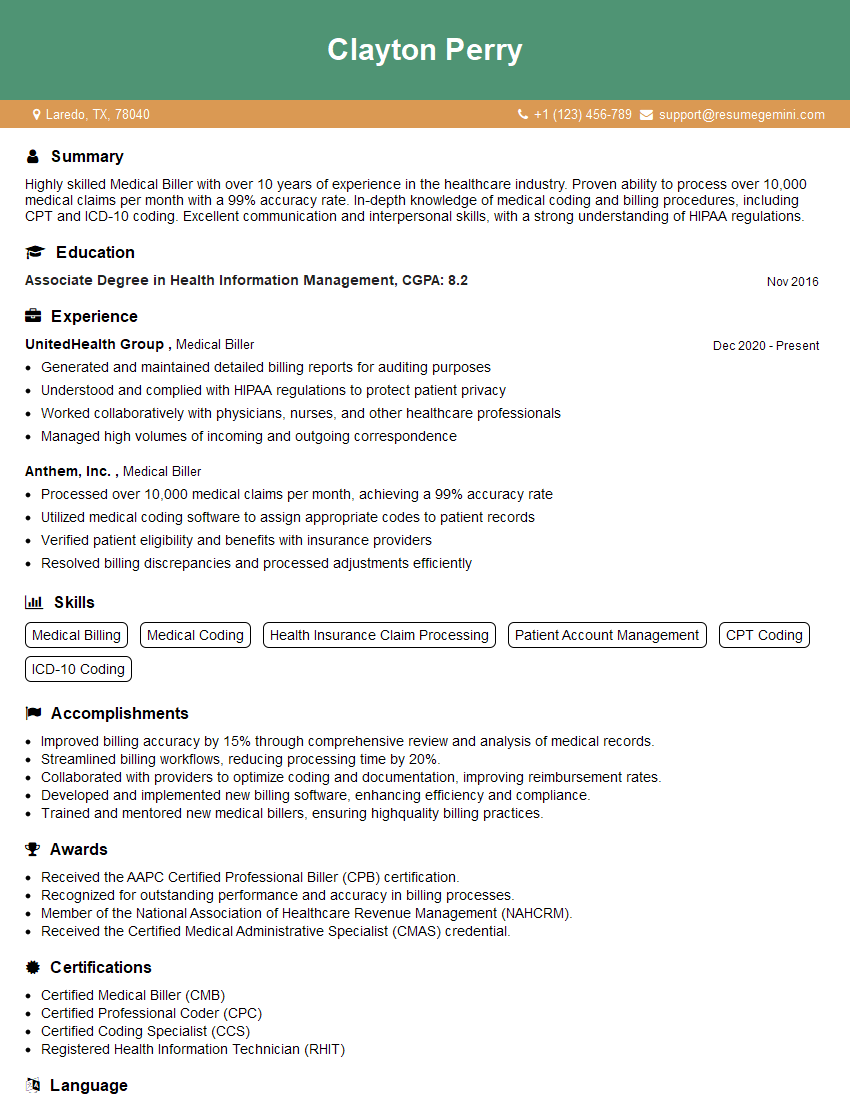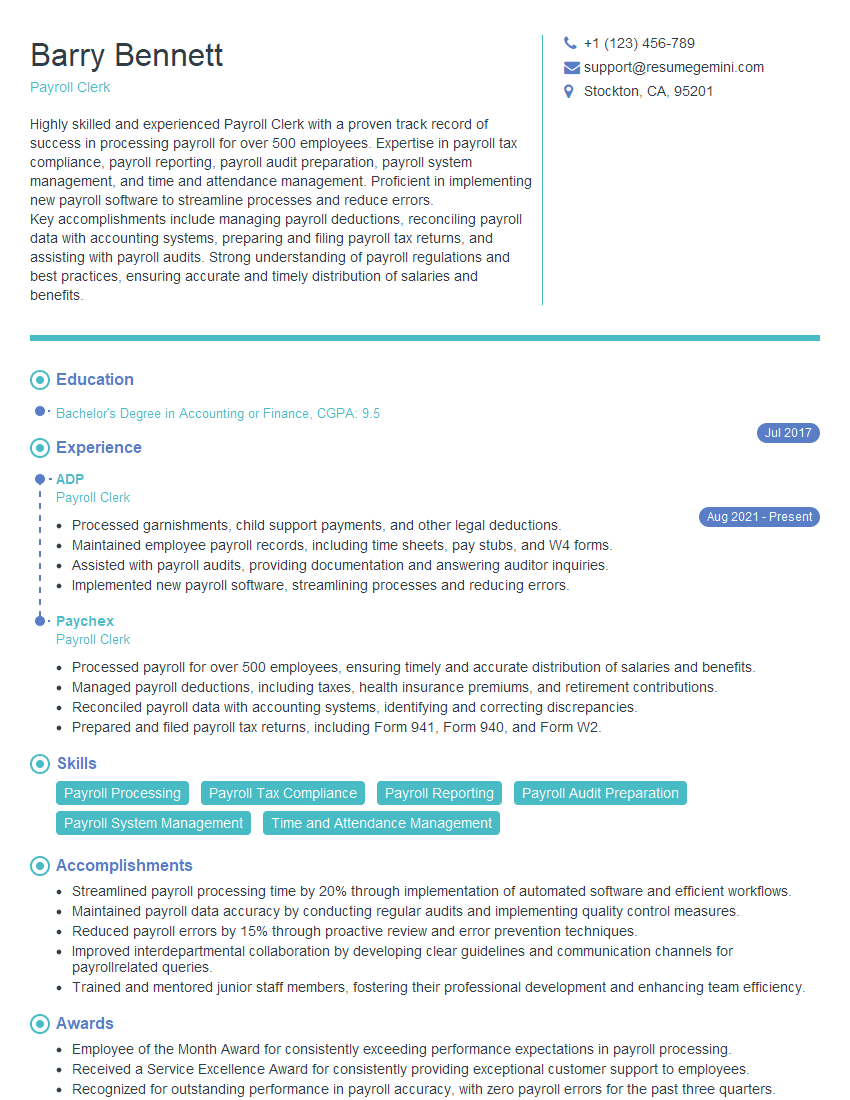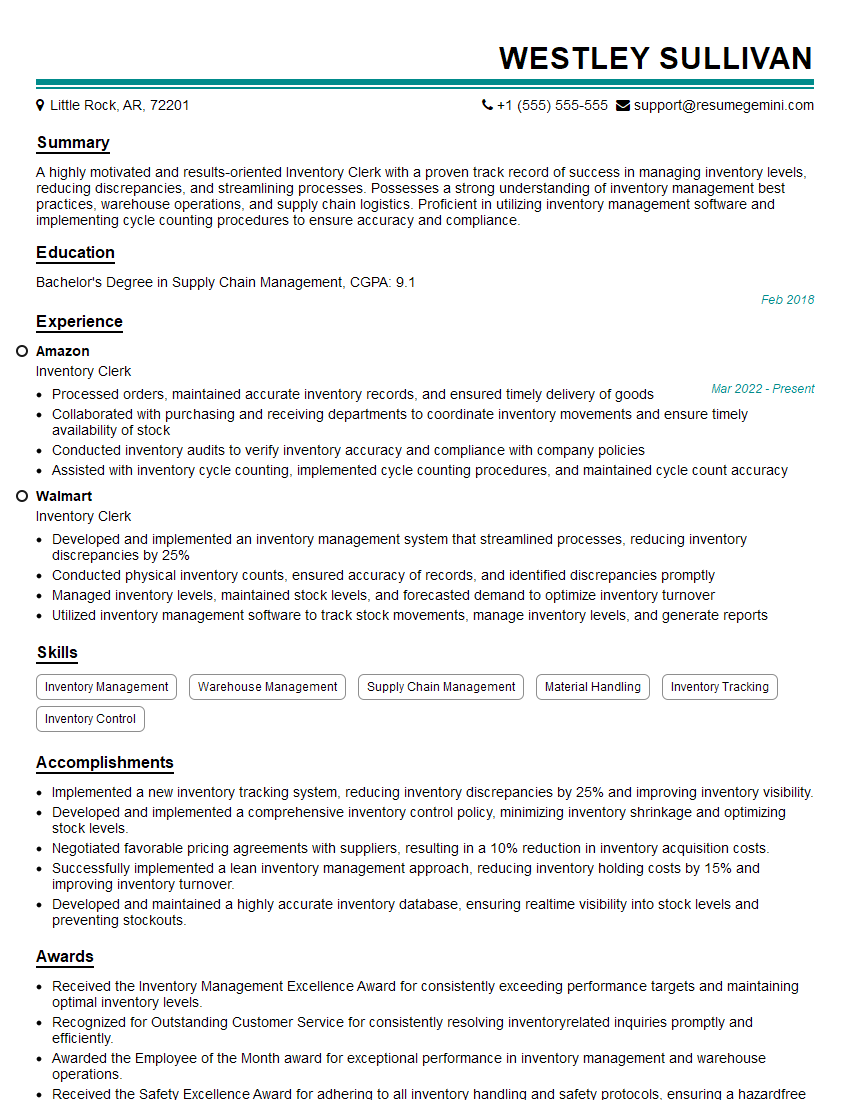The thought of an interview can be nerve-wracking, but the right preparation can make all the difference. Explore this comprehensive guide to Basic Math and Calculation Skills interview questions and gain the confidence you need to showcase your abilities and secure the role.
Questions Asked in Basic Math and Calculation Skills Interview
Q 1. What is the formula for calculating the area of a circle?
The area of a circle is calculated using the formula: Area = πr², where ‘r’ represents the radius of the circle (the distance from the center to any point on the circle) and ‘π’ (pi) is a mathematical constant, approximately equal to 3.14159.
Imagine you’re making a pizza. The radius is the distance from the center to the edge of the pizza. To find the total area of pizza you have, you’d use this formula. If your pizza has a radius of 10 cm, the area would be: Area = π * (10 cm)² ≈ 314.16 cm².
Q 2. What is the order of operations (PEMDAS/BODMAS)?
PEMDAS/BODMAS is the order of operations in mathematics, ensuring consistent results when solving equations. It stands for: Parentheses/Brackets, Exponents/Orders, Multiplication and Division (from left to right), Addition and Subtraction (from left to right).
Think of it as a set of instructions. You always follow the order: solve what’s inside parentheses first, then exponents, then multiplication and division (working from left to right if both appear), and finally addition and subtraction (again, from left to right). For example, in the equation 10 + 5 * 2, multiplication comes before addition, so the answer is 20 (not 30).
Q 3. Solve the equation: 3x + 7 = 16
To solve the equation 3x + 7 = 16, we need to isolate ‘x’.
- Subtract 7 from both sides:
3x + 7 - 7 = 16 - 7which simplifies to3x = 9. - Divide both sides by 3:
3x / 3 = 9 / 3. This gives us the solutionx = 3.
Let’s check our answer: 3 * 3 + 7 = 16. It works!
Q 4. Calculate 15% of 200.
To calculate 15% of 200, we can convert the percentage to a decimal and then multiply:
- Convert 15% to a decimal: 15% =
15 / 100 = 0.15 - Multiply by 200:
0.15 * 200 = 30
Therefore, 15% of 200 is 30. Imagine you’re calculating a 15% tip on a $200 bill; this is how you’d do it.
Q 5. Convert the fraction 3/4 to a decimal.
To convert the fraction 3/4 to a decimal, we simply divide the numerator (3) by the denominator (4):
3 ÷ 4 = 0.75
Q 6. Convert 0.75 to a percentage.
To convert the decimal 0.75 to a percentage, we multiply by 100:
0.75 * 100 = 75%
Q 7. What is the square root of 64?
The square root of a number is a value that, when multiplied by itself, gives the original number. The square root of 64 is 8 because 8 * 8 = 64.
Q 8. What is the cube root of 27?
The cube root of a number is the value that, when multiplied by itself three times, equals the original number. Think of it as the inverse operation of cubing a number (raising it to the power of 3). For example, the cube of 2 is 2 x 2 x 2 = 8, so the cube root of 8 is 2.
To find the cube root of 27, we’re looking for a number that, when multiplied by itself three times, equals 27. That number is 3, because 3 x 3 x 3 = 27.
Therefore, the cube root of 27 is 3.
Q 9. If you have 12 apples and you eat 3, how many apples do you have left?
This is a simple subtraction problem. If you start with 12 apples and eat 3, you subtract the number of apples eaten from the initial number of apples.
12 apples – 3 apples = 9 apples
You have 9 apples left.
Q 10. If a train travels at 60 mph for 2 hours, how far has it traveled?
To calculate the distance traveled, we use the formula: Distance = Speed x Time. Speed is given in miles per hour (mph), and time is given in hours. In this case, the train travels at a speed of 60 mph for 2 hours.
Distance = 60 mph x 2 hours = 120 miles
The train has traveled 120 miles.
Q 11. What is the average of 10, 15, 20, and 25?
The average (or mean) of a set of numbers is calculated by summing all the numbers and then dividing by the total count of numbers.
First, let’s sum the numbers: 10 + 15 + 20 + 25 = 70
Next, we divide the sum by the number of values (which is 4): 70 / 4 = 17.5
The average of 10, 15, 20, and 25 is 17.5.
Q 12. If a shirt costs $25 and is discounted by 20%, what is the final price?
To calculate the final price after a discount, we first find the amount of the discount and then subtract it from the original price. A 20% discount on a $25 shirt means we need to calculate 20% of $25.
Discount amount = 20% of $25 = (20/100) * $25 = $5
Final price = Original price – Discount amount = $25 – $5 = $20
The final price of the shirt is $20.
Q 13. Solve for x: 2x – 5 = 11
To solve for ‘x’ in the equation 2x – 5 = 11, we need to isolate ‘x’ on one side of the equation. We can do this using algebraic manipulation.
- Add 5 to both sides: 2x – 5 + 5 = 11 + 5 => 2x = 16
- Divide both sides by 2: 2x / 2 = 16 / 2 => x = 8
Therefore, the solution is x = 8.
Q 14. Calculate the perimeter of a rectangle with length 8cm and width 5cm.
The perimeter of a rectangle is the total distance around its outer edges. It’s calculated using the formula: Perimeter = 2 * (Length + Width).
Given that the length is 8cm and the width is 5cm, let’s plug these values into the formula:
Perimeter = 2 * (8cm + 5cm) = 2 * 13cm = 26cm
The perimeter of the rectangle is 26cm.
Q 15. What is the difference between mean, median, and mode?
Mean, median, and mode are all measures of central tendency in statistics, describing the ‘average’ of a dataset. They differ in how they represent this average.
- Mean: This is the arithmetic average. You calculate it by summing all the numbers in a dataset and then dividing by the total number of values. Think of it as ‘splitting the pie evenly’. For example, the mean of 2, 4, and 6 is (2+4+6)/3 = 4.
- Median: This is the middle value when a dataset is ordered from least to greatest. If there’s an even number of values, the median is the average of the two middle numbers. Imagine lining people up by height; the median height is the height of the person in the middle. For example, the median of 2, 4, and 6 is 4. The median of 2, 4, 6, and 8 is (4+6)/2 = 5.
- Mode: This is the value that appears most frequently in a dataset. It’s the most popular choice. You can have more than one mode or no mode at all. For example, the mode of 2, 4, 4, 6 is 4.
Choosing the right measure depends on the data and the question you’re trying to answer. The mean is sensitive to outliers (extreme values), while the median is more robust. The mode is useful for categorical data.
Career Expert Tips:
- Ace those interviews! Prepare effectively by reviewing the Top 50 Most Common Interview Questions on ResumeGemini.
- Navigate your job search with confidence! Explore a wide range of Career Tips on ResumeGemini. Learn about common challenges and recommendations to overcome them.
- Craft the perfect resume! Master the Art of Resume Writing with ResumeGemini’s guide. Showcase your unique qualifications and achievements effectively.
- Don’t miss out on holiday savings! Build your dream resume with ResumeGemini’s ATS optimized templates.
Q 16. Explain how to convert a fraction to a percentage.
Converting a fraction to a percentage involves two simple steps: first, convert the fraction to a decimal, and then multiply by 100 to express it as a percentage.
Step 1: Convert the fraction to a decimal. This is done by dividing the numerator (top number) by the denominator (bottom number). For example, to convert the fraction 1/4 to a decimal, you divide 1 by 4, which equals 0.25.
Step 2: Multiply the decimal by 100. This will give you the percentage equivalent. In our example, 0.25 multiplied by 100 equals 25%. Therefore, 1/4 is equivalent to 25%.
Let’s try another example: Convert 3/5 to a percentage. 3 divided by 5 = 0.6. 0.6 multiplied by 100 = 60%. So, 3/5 is equal to 60%.
Q 17. What is the formula for calculating simple interest?
The formula for calculating simple interest is:
Simple Interest = Principal × Rate × Time
Where:
- Principal: The initial amount of money invested or borrowed.
- Rate: The annual interest rate (expressed as a decimal).
- Time: The time period for which the money is invested or borrowed (usually in years).
For instance, if you invest $1,000 at a 5% interest rate for 3 years, your simple interest would be $1,000 × 0.05 × 3 = $150.
Q 18. If you have $100 and invest it at 5% simple interest for 2 years, how much interest will you earn?
Using the simple interest formula (Simple Interest = Principal × Rate × Time), we can calculate the interest earned:
Simple Interest = $100 × 0.05 × 2 = $10
You will earn $10 in interest.
Q 19. How do you calculate the area of a triangle?
The area of a triangle is calculated using the formula:
Area = (1/2) × base × height
Where:
- Base: The length of the triangle’s base.
- Height: The perpendicular distance from the base to the opposite vertex (the highest point).
For example, if a triangle has a base of 6 cm and a height of 4 cm, its area would be (1/2) × 6 cm × 4 cm = 12 sq cm.
Q 20. Solve: 1/2 + 1/4
To solve 1/2 + 1/4, we need a common denominator. The least common multiple of 2 and 4 is 4. Therefore, we rewrite 1/2 as 2/4:
2/4 + 1/4 = 3/4
The solution is 3/4.
Q 21. Convert 2/5 to a decimal.
To convert 2/5 to a decimal, divide the numerator (2) by the denominator (5):
2 ÷ 5 = 0.4
Therefore, 2/5 as a decimal is 0.4.
Q 22. What are the factors of 24?
Factors are numbers that divide evenly into a given number without leaving a remainder. To find the factors of 24, we look for all the numbers that can be multiplied together to equal 24. We can start with 1 and work our way up:
- 1 x 24 = 24
- 2 x 12 = 24
- 3 x 8 = 24
- 4 x 6 = 24
Therefore, the factors of 24 are 1, 2, 3, 4, 6, 8, 12, and 24. Think of it like finding all the pieces of a puzzle that fit together to make the number 24.
Q 23. Solve: 25 x 4 – 12
This problem uses the order of operations (often remembered by the acronym PEMDAS/BODMAS: Parentheses/Brackets, Exponents/Orders, Multiplication and Division, Addition and Subtraction). We perform multiplication before subtraction.
- First, multiply 25 by 4: 25 x 4 = 100
- Next, subtract 12: 100 – 12 = 88
Therefore, the solution to 25 x 4 – 12 is 88. This is a fundamental calculation used in many areas, from balancing a checkbook to calculating material costs for a project.
Q 24. Calculate the volume of a cube with side length 5cm.
The volume of a cube is calculated by multiplying the length, width, and height. Since all sides of a cube are equal, the formula simplifies to side length cubed (side3).
- Side length: 5 cm
- Volume = side x side x side = 5 cm x 5 cm x 5 cm = 125 cm3
Therefore, the volume of a cube with a side length of 5 cm is 125 cubic centimeters. Understanding volume calculations is crucial in various fields, from architecture (determining the space within a building) to engineering (calculating the capacity of containers).
Q 25. What is the formula for calculating the circumference of a circle?
The circumference of a circle is the distance around it. The formula is:
Circumference = 2πr
Where:
rrepresents the radius of the circle (the distance from the center to any point on the circle).π(pi) is a mathematical constant, approximately equal to 3.14159.
Imagine you’re trying to wrap a string around a circular cake; the length of the string would represent the circumference. This formula is essential in various applications, from calculating the amount of fencing needed for a circular garden to designing circular machinery parts.
Q 26. If a product costs $10 and you sell it for $15, what is the profit margin?
Profit margin represents the percentage of revenue that translates into profit. It’s calculated as follows:
- Profit = Selling Price – Cost Price = $15 – $10 = $5
- Profit Margin = (Profit / Selling Price) x 100%
- Profit Margin = ($5 / $15) x 100% = 33.33%
Therefore, the profit margin is approximately 33.33%. This is a key metric in business to assess the profitability of a product or service, guiding pricing strategies and overall business health.
Q 27. What are ratios and proportions, and how are they used?
Ratios and proportions are fundamental mathematical concepts used to compare quantities. A ratio shows the relative sizes of two or more values. It can be expressed as a fraction (e.g., 1/2), using a colon (e.g., 1:2), or with the word ‘to’ (e.g., 1 to 2). A proportion is a statement that two ratios are equal.
Example: If you have a recipe that calls for 2 cups of flour for every 1 cup of sugar, the ratio of flour to sugar is 2:1. If you want to double the recipe, you’d use a proportion to find the new amounts: 2/1 = x/2 (where ‘x’ is the new amount of flour). Solving this proportion gives x = 4 cups of flour.
Real-world applications: Ratios and proportions are used extensively in various fields such as scaling blueprints in architecture, calculating ingredient amounts in cooking, determining speeds and distances, and even in financial analysis (comparing different assets).
Key Topics to Learn for Basic Math and Calculation Skills Interview
- Arithmetic Operations: Mastering addition, subtraction, multiplication, and division with both whole numbers and decimals is fundamental. Understand order of operations (PEMDAS/BODMAS).
- Fractions and Percentages: Practice converting between fractions, decimals, and percentages. Apply these concepts to solve real-world problems such as calculating discounts, proportions, and ratios.
- Ratio and Proportion: Understand the concept of ratios and proportions and their applications in scaling recipes, comparing quantities, and solving problems involving rates.
- Basic Algebra: Familiarize yourself with solving simple algebraic equations and inequalities. This includes understanding variables, constants, and basic equation manipulation.
- Data Interpretation: Practice interpreting data presented in tables, charts, and graphs. This includes calculating averages, medians, and understanding data trends.
- Unit Conversions: Become proficient in converting between different units of measurement (e.g., metric to imperial). This is crucial for many practical applications.
- Problem-Solving Strategies: Develop a systematic approach to solving mathematical problems. Practice breaking down complex problems into smaller, manageable steps.
Next Steps
Mastering basic math and calculation skills is vital for success in numerous fields, demonstrating your attention to detail and analytical abilities. These skills are highly valued by employers and contribute significantly to career growth and advancement opportunities. To maximize your job prospects, it’s crucial to create a resume that effectively highlights these abilities and is optimized for Applicant Tracking Systems (ATS). ResumeGemini is a trusted resource to help you build a professional and impactful resume tailored to your skills. We provide examples of resumes specifically designed for candidates with strong basic math and calculation skills to help you get started.
Explore more articles
Users Rating of Our Blogs
Share Your Experience
We value your feedback! Please rate our content and share your thoughts (optional).
What Readers Say About Our Blog
Hi, I’m Jay, we have a few potential clients that are interested in your services, thought you might be a good fit. I’d love to talk about the details, when do you have time to talk?
Best,
Jay
Founder | CEO







